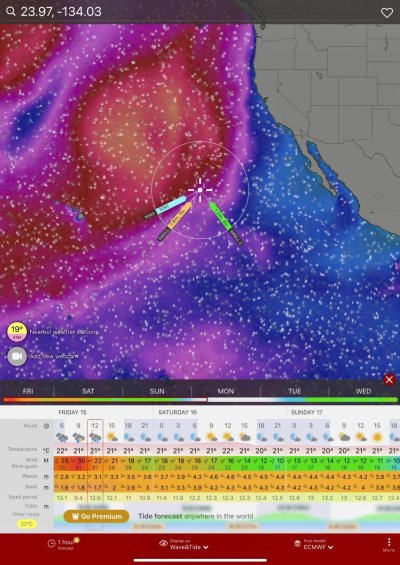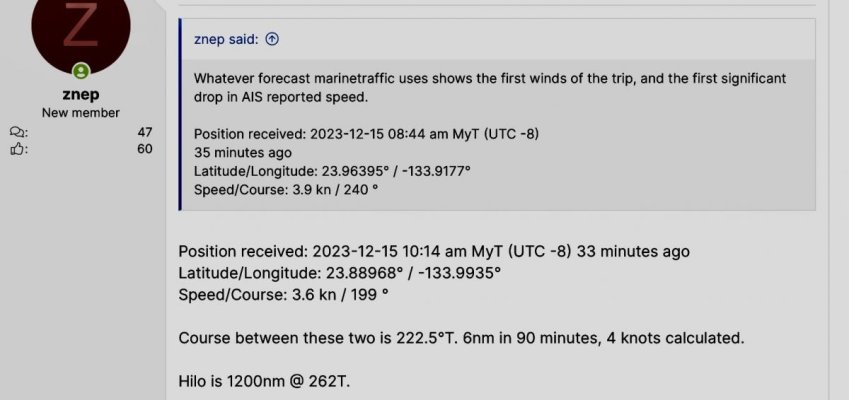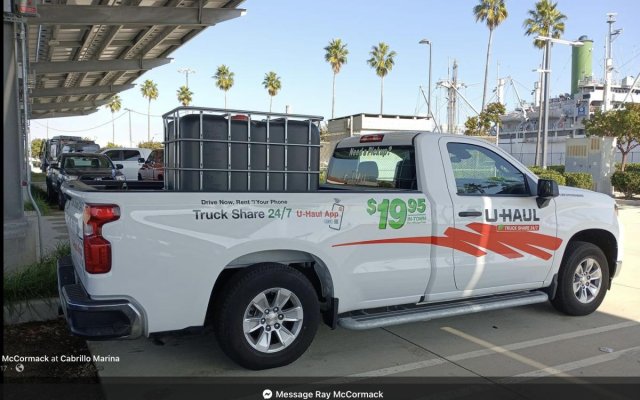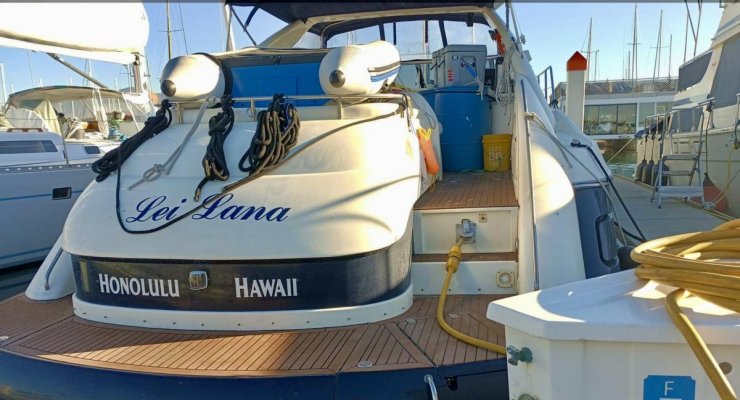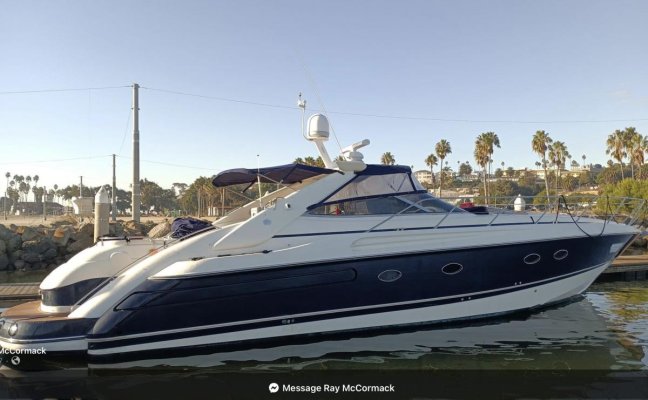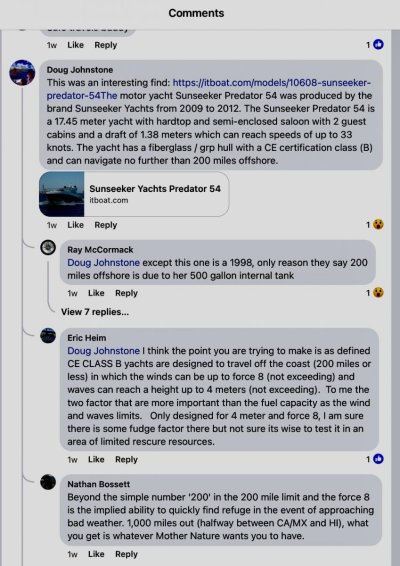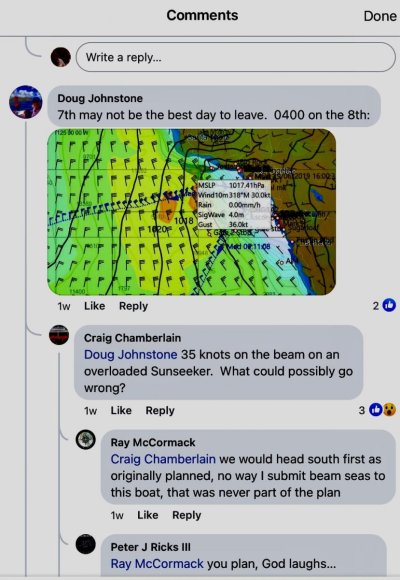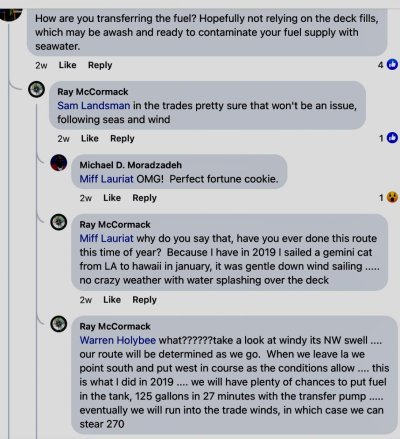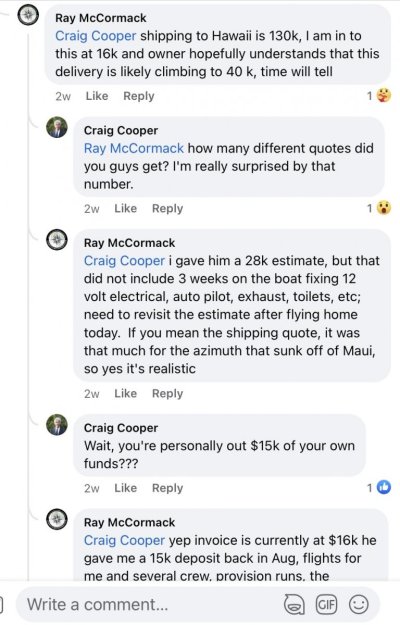Wouldn’t the bladder tanks be the first emptied and be stored away by now?
That what you would ideally do. Say you use bladders to carry and extra 20% of fuel. Then after the first 20% of your trip, there is space in the built-in tanks for the contents of the bladder. That's also within the initial weather forecast window so presumably you have weather than will allow a safe transfer. Remember, as you empty the bladder, it becomes unstable with sloshing fuel, and the restraints are less effective, so you want good conditions. And as Sam pointed out earlier, you need a way to transfer that fuel with out losing it, and with out getting water into the tanks. Once transferred, you can stow the bladder and carry on.
In this case he has about 75% of his fuel in bladders. That means he has to transfer fuel at approximately the 25%, 50%, and 75% points long the route. The last two are outside of the reliable forecasting window, and in this case the forecast was for heavy seas. That creates a significant risk window during those transfers. Given all this, here are the things I'd be looking at very carefully.
- For stability of the boat and security of the bladders, they need to be emptied in a single shot, as quickly as possible. More, smaller bladders is better than fewer large bladders.
- You need to be able to transfer in rough conditions. What is the plumbing connection, how will it be secured, is it gravity drained or pumped? Someone mentioned draining or pumping through the normal deck fill. That would be a non started in rough seas because of risk of water getting into the fuel system. Some sort of direct plumbing would be mandatory, in my mind.
- How are the bladders themselves secured. I have heard numerous times that the build-in tie downs are inadequate. Successful restraint involves additional cross strapping, or better yet a cargo net strapped down tight.
- To what extend are the bladders providing support or otherwise helping to secure and immobilize other bladders? As you empty bladders, do others become less secure?
- Bladders take up a lot of space. What are they blocking? Cockpit or deck bladders can't block freeing ports, for example, or otherwise interfere with clearing deck or other water that comes aboard. What about access to machinery and equipment space if repairs are required. If there were a steering issue, would the steering gear be accessible with that cockpit bladder in place? What about engines, pumps, generators, bilges, etc.?
- The boat will be carrying an unnatural load not just for the first 25% of the trip in good weather, but for 75% of the trip, and through expected bad conditions based of the forecast. What does that do to stability? Depending on where it's located, it could actually help stability, but it takes some analysis to figure that out - not an apparent strength of our hero. And if it's not positioned favorably, or gets loose in any way, it will make a boat that has unsuitable stability in the first place into a very dangerous situation.
- What are you going to do if one of the bladders does get free? Do you have any way to get it under control? And what are they secured to in the first place? On deck I expect there are strong points - as strong as they get on a Sea Ray. But what about below deck? I know first hand what happens to a boat when stuff get loose in rough seas :-(

